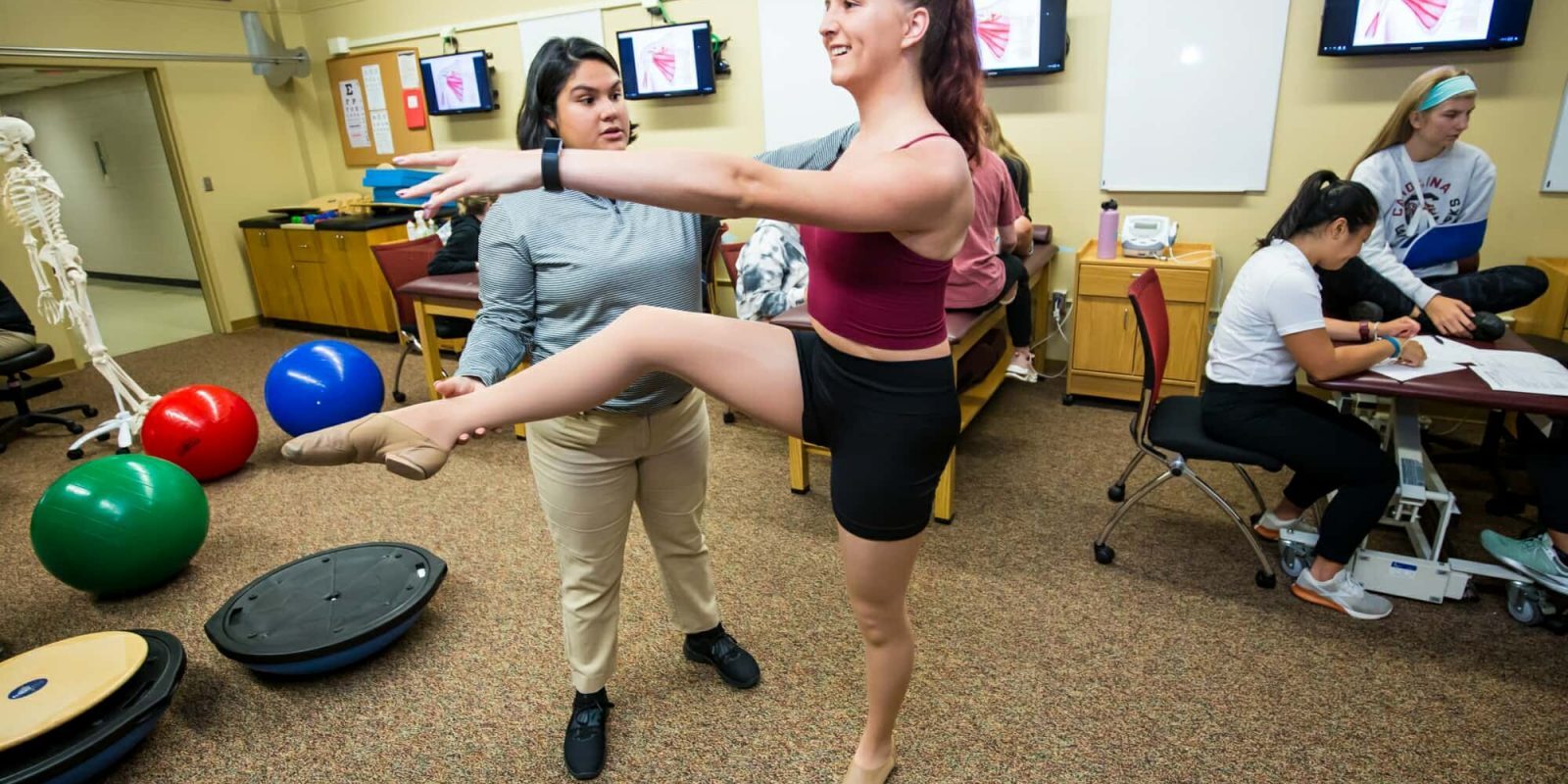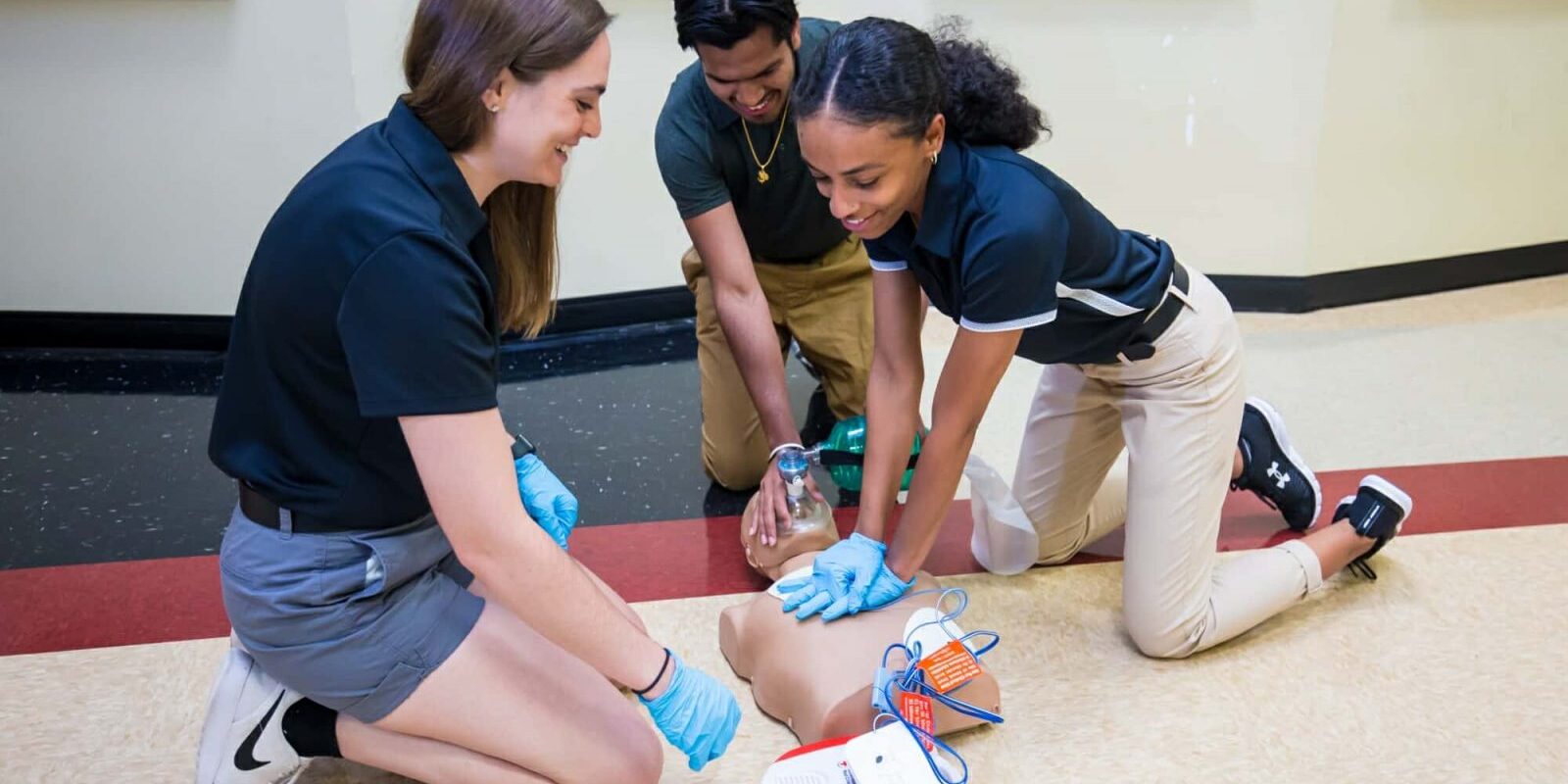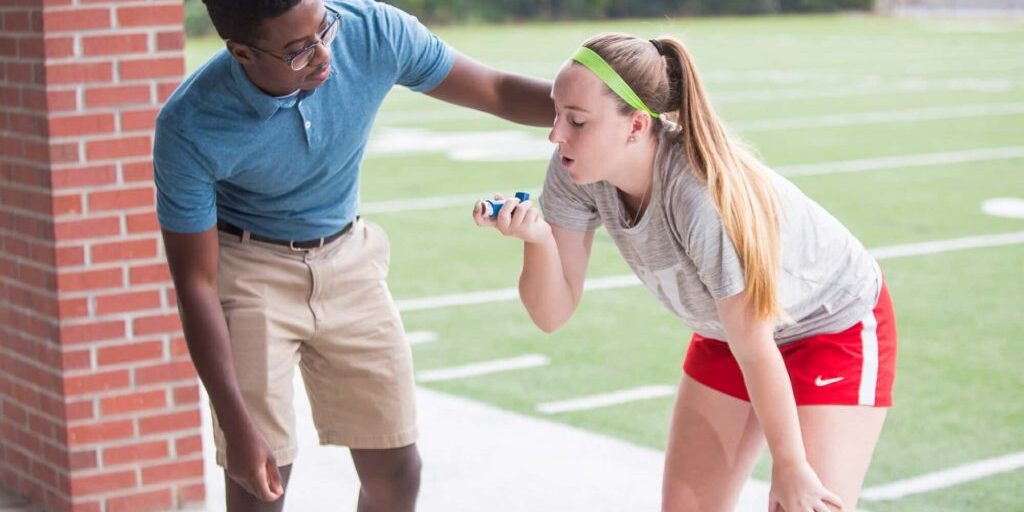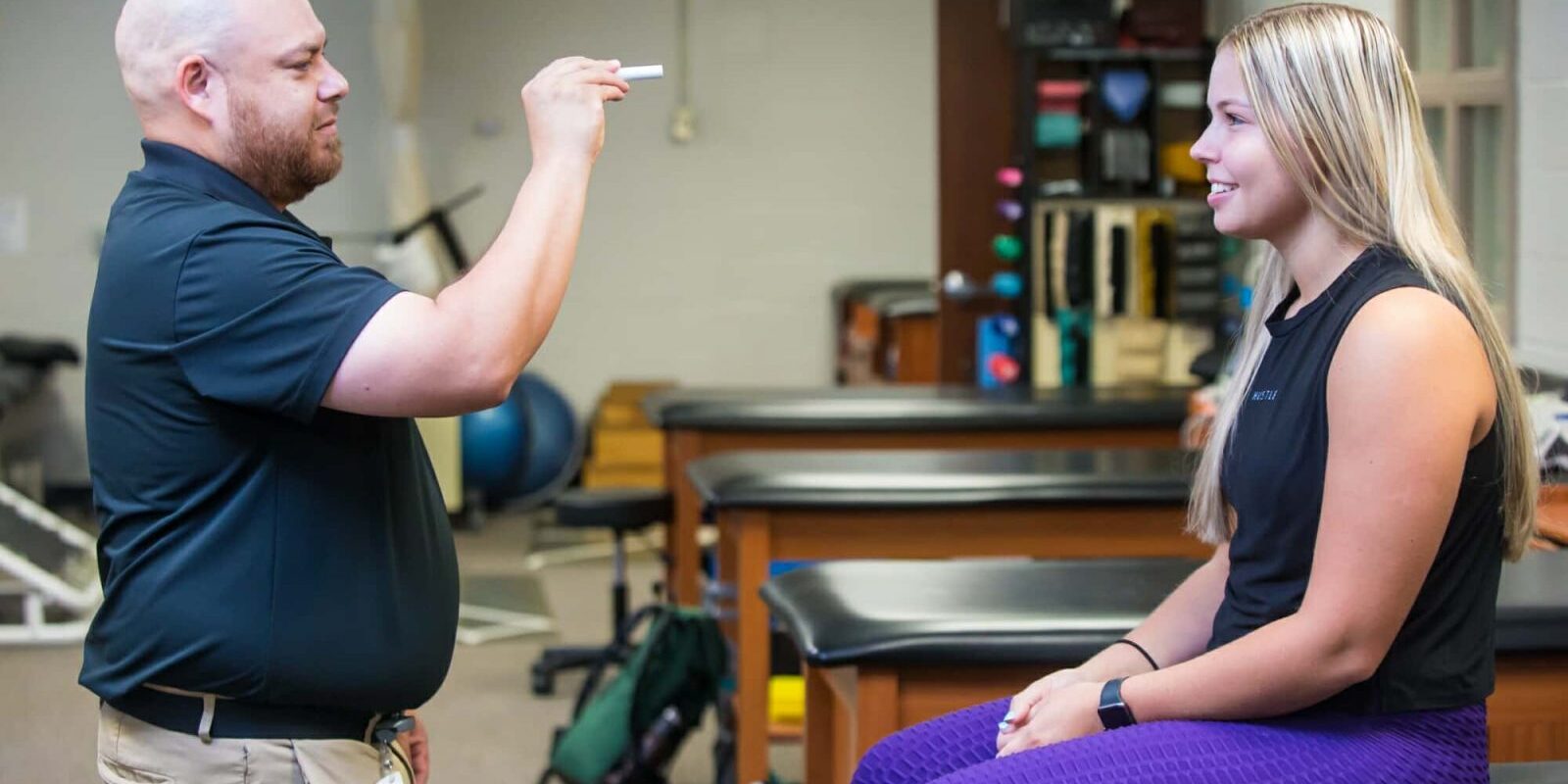
Athletic Training: Combining Healthcare and Sport
Athletic Trainers collaborate with other healthcare professionals to promote overall wellness, reduce physical risks, optimize performance, and deliver therapeutic interventions to help patients recover from injuries and illnesses.
It is important to have a clear understanding both of what Athletic Training is and is not. At first glance, the profession may be confused with personal training or physical therapy. However, the career paths are distinct from each other in a number of critical ways. Although personal trainers help improve physical performance, they do not treat injuries or illnesses. Physical therapists provide care to a broader spectrum of patients as compared to athletic trainers and their professional education does not include on-field management of acute conditions. Athletic trainers often collaborate with both physical therapists and personal trainers in providing a team-based approach to patient-centered care.
In contrast, Athletic Trainers appear in every stage of a patient’s experience — before, during, and after. Athletic Trainers are healthcare professionals with an important role to play in preventing, diagnosing, and offering therapeutic interventions for people with a wide variety of injuries and illnesses.

An Athletic Trainer’s Activities Range By Patient Type
No two Athletic Training jobs are exactly the same, which is why Athletic Training is such an exciting career.
One focus is on sport, working with individual athletes and teams. In this role, you may spend time preventing common injuries in that sport and developing plans collaboratively with other sports professionals on how to maximize on-field performance. When an unfortunate injury does occur, you would be first on the field to assess the injury and administer first-aid or emergency care.
If you work with the “workplace athlete” , you may work with clients to improve their physical conditioning and educate them on how to prevent injuries. This is common in work environments like warehouses and factories that can be physically-demanding on large workforces. There are also Athletic Trainers who work with tactical athletes — such as military personnel and law enforcement officers — to help prepare them to perform in times of intense training or even combat scenarios. The field extends far beyond the obvious role with professional, collegiate, and high school athletes, to include performing artists on stage and private clients in recreational sports. Recreational athletes of all ages get hurt too, and Athletic Trainers also provide care in out-patient clinics or on-site at events.
Athletic Trainers (ATs) perform these duties for a variety of reasons. By educating patients and applying protective devices, ATs help prevent costly injuries that can keep athletes on the sidelines or cause a workplace’s employees to miss weeks or even months of work. Athletic Trainers can reduce the risk of lawsuits against athletic teams, school districts and other organizations by ensuring that patients follow established guidelines for injury prevention and rehabilitation. By developing comprehensive rehabilitation plans, Athletic Trainers also help patients recover faster and with as little discomfort as possible. Ultimately, the AT has an impact that can be directly seen on individual patients, yet felt across entire teams, workforces and organizations.
As in all of healthcare, collaboration with other providers is essential to providing great care. ATs work with physicians, physical therapists, social workers, and school nurses (to name a few partners) to make sure that the patient gets the best care possible.

AT Work Environments
One of the biggest advantages of becoming an Athletic Trainer is the opportunity to work in a variety of environments. Many Athletic Trainers enter the profession because they love sport and want the chance to work with athletes, but this isn't the only path to success. If you want to work with athletes, there are Athletic Training jobs available with professional sports teams, colleges, and secondary schools. When you work with athletes, you typically attend practices and competitions, which means you'll likely be working evening and weekend hours. For many, the variety in the work week and continued involvement in sport is appealing. However, there are other paths within AT that offer more standard work hours.
If you prefer a different environment, there are plenty of options. Athletic Trainers work in medical offices, military units, amusement parks, and rehabilitation centers. In a medical office or rehabilitation center, you may focus on helping patients recover from injuries and teaching people how to prevent injuries when they engage in physical activity. Military units employ Athletic Trainers to help active-duty soldiers maintain their health while they serve. If you work at an amusement park, you may be asked to work with park performers to keep their bodies in peak physical condition and reduce risks while they perform for live audiences.
Depending on your role, you may be working in an office during normal business hours or traveling with performers or teams on weekends. Once you have the right credentials, the possibilities are endless.

The Role Of An Athletic Trainer
Athletic Trainers are involved in every step of the patient life cycle, which includes examination, diagnosis, rehabilitation and wellness promotion. Let’s take a look at one scenario an Athletic Trainer may experience with a patient:
Your patient comes to you in the athletic training clinic — a college football player in the offseason — with preseason training starting in two days. He’s experiencing knee pain that began about a week ago. You ask questions, watch his movement patterns, and conduct a thorough physical exam to learn more about the pain and what the cause may have been. You know that he has a history of low back pain, recently recovered from strep throat, and is taking medication to help manage his depression. As you collect evidence, you begin to develop a diagnosis. From here, you develop a treatment plan, which may include referral for further diagnostic testing, pain management strategies, activity modification, a change in footwear, and/or interventions to change mobility, strengthen muscles, or improve movement.
Your plan works, and the athlete is soon pain-free and ready for success on and off the field.

Growing Opportunities In A Unique Healthcare Field
The demand for Athletic Trainers is growing much faster than average, with the U.S. Bureau of Labor Statistics reporting that the number of Athletic Training jobs available between 2022 and 2032 is expected to increase by 16%. In other words, employers are expected to create about 5,200 new Athletic Training jobs within the next decade. When the average career’s growth rate is 4%, it’s clear that this field is growing quickly, making now a great time to start your Athletic Training career.
The American Medical Association (AMA), Department of Health and Human Services (HHS), and the Health Resources Services Administration (HRSA) have recognized athletic trainers (ATs) as a healthcare profession because of the important role ATs fill in their patient’s lives.
If you believe Athletic Training can be the right career for you, continue to learn about how you can prepare to apply for a program.
